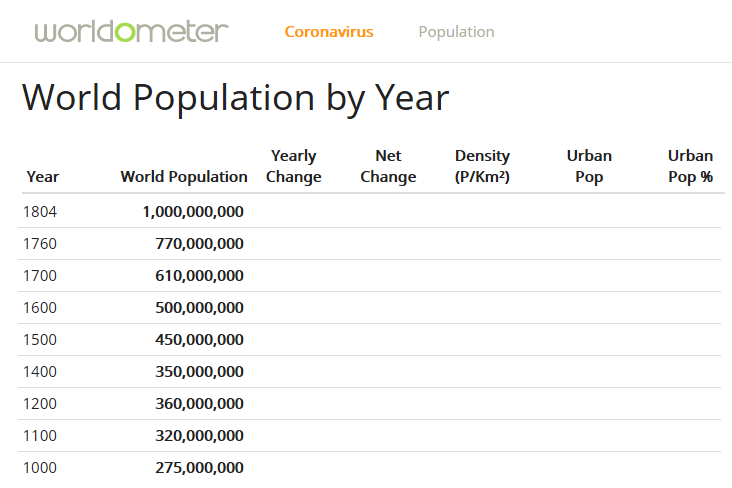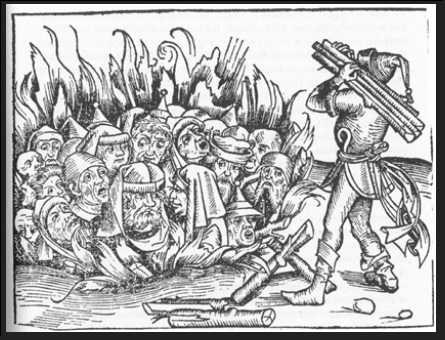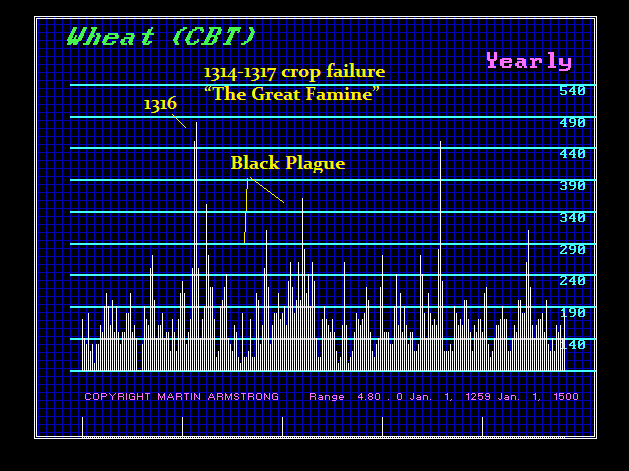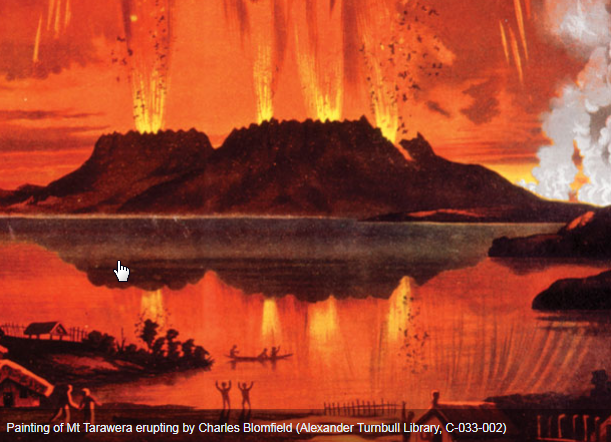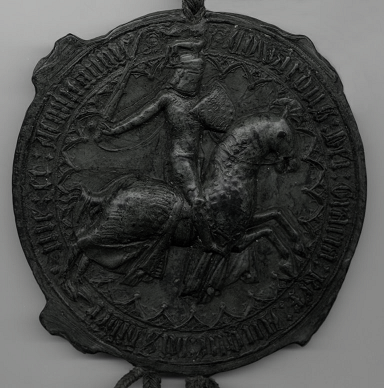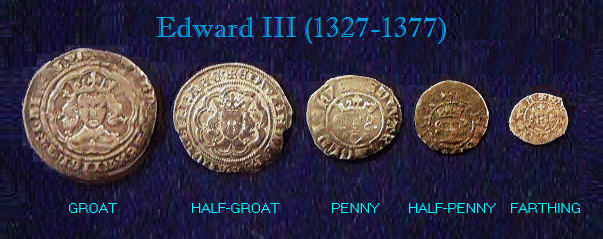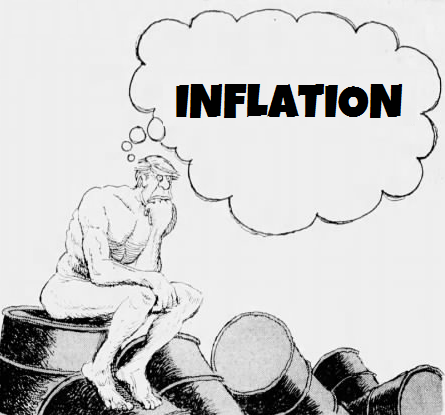While just about every historical piece on the Black Plague you will read tells the story from the plague perspective. However, I look at history differently. I always correlate everything from all sides and what all the reports on the Black Plague overlook are the economics of the crisis. While there are no GDP records, which is why they ignore the economics, there is a coin record that also provides an eye into the very existence of the crisis at the time. What is also omitted is that Mount Tambora erupted in 1815 which set in motion a volcanic winter. The worse instances of disease follow periods of a severe winter where food production collapses creating malnutrition leaving people more susceptible to disease.
The estimates on world population are unrealistic and only show a 2% decline in population during the 14th century. This does not match either the contemporary accounts of the devastation or even the coinage record of the period. The Black Plague took place during the reign of Edward III (1327-1377), which contemporary accounts place the devastation between 30% and 50% of the population throughout Europe. We should take this as a sample of the rest of the world since this came from Asia and was carried to Europe by fleeing troops from the plague in Crimea with the invading Tartars who began catapulting their dead into the forts of the Europeans.
Today, we see the hatred building as the governments target the “unvaccinated” precisely as they were blaming the Jews during the Black Plague. Indeed, the Jewish population of Europe was turned into the spreader of the plague pandemic of 1347-1350. Although other religious groups were pursued, the Jews were accused of both actually creating and spreading the plague (Cantor 2001; In the Wake of the Plague. Simon and Schuster, New York, NY.)
In Spain, as well as Germany and Italy, Jewish families were marked with distinctive clothing, isolated, and killed. Hitler was not the first to require distinctive clothing to identify the Jews. When the plague hit southern France in 1348, the hatred of the Jewish people was unleashed. Four Jewish citizens were dragged from their houses and burned at the stake on the mere accusation that they had poisoned the town’s water supply with plague. The initial charges of spreading the plague in southern France led to an outbreak of accusations, and an explosion of death where more than 2,000 Jews were burned alive in France and Germany (Tuchman 1978; A Distant Mirror: The Calamitous 14th Century. Ballantine Books, New York, NY.)
Once the Jews became the scapegoats during the Black Plague, that distinction remained for centuries. The Spanish King Ferdinand and Queen Isabella (1474-1504) initially tried to protect the Jewish population from the Inquisition about 100 years later because of their economic importance throughout the country as moneylenders. Nevertheless, once society had been divided during the Black Plague, there was no return to normal even 100 years later. Thus, the practice of blaming the Jews continued and eventually led to The Spanish Inquisition in 1478. This is what we need to fear that the division within society between the vaccinated and non-vaccinated will remain for decades to come. There will be no return to normal.
Clearly, the Black Plague not only divided society as we have today but by the drastic decline in the population of Europe also sparked a labor shortage that re-instituted wages. Once again, there is a massive shortage of people willing to work. Small businesses, even in Florida, are hard-pressed to find employees. In this respect, we have not just the division of society, but we also have similar shortages of labor.
We can see from the price of wheat that the first all-time record high came during the Great Famine 1314-1317 which set the stage for the Black Death. At that time, it began to rain almost constantly throughout the summer and autumn of 1314. This continued into most of 1315 and 1316. The impact was the crops rotted in the ground and the harvests failed. There are reports that livestock drowned or starved and there were even stories about cannibalism. Prices of grain soared and King Edward II even imposed price controls but that failed. History has remembered this as the Great Famine, which was said to have reduced the British population by 5% even before the Black Plague. The devastation was throughout Europe. Even the price of salt rose for that was the only way at that time to cure and preserve meat. The price controls imposed in 1315 were abolished at the Lincoln parliament in 1316.
It is believed that the Great Famine was caused by the 1314 eruption of the volcano in New Zealand. That volcanic eruption of Mount Tarawera in New Zealand is not fully known with respect to its magnitude. This illustration is from the 1886 eruption which was devastating. The early Māori and the Europeans who arrived in the 1800s in New Zealand had no idea that Tarawera was an active volcano. In June 1886, however, it came to life in a violent one-day eruption – the deadliest in the history of New Zealand settlement. Geological evidence points to the 1314 eruption as quite big. The flat top is believed to be the remnant of the 1314 eruption where the entire cone was sent into the air.
For a brief shining moment during the Black Plague, real free markets existed. Labor rose in value naturally based upon demand. Serfdom was brought to its knees by the shortage of labor which was only made far worse by making the Jews unemployable. Landlords were forced to begin paying wages and the collapse in economic activity led the European kings to ignore the impact and raise taxes in their own self-interest. This is when we see the introduction of the poll tax, for if the common people would now earn money, then that was a new source for taxation. Can you imagine if retail sales declined, so instead of lowering prices, the store raised them to try to make up its lost profits? This is how governments always respond.
As long as there was serfdom, people never paid taxes, only the “rich” landowners. This economic change of free labor (capitalism) produced the first tax rebellion in France and then England. The shortage in labor sent agricultural prices soaring. The landowners said this wasn’t fair that wages were rising and England passed legislation to reverse the free markets trying to reduce inflation. In 1362, a petition was filed in the English House of Commons blaming inflation on workers “who refuse to bear the burden of poverty patiently” to justify freezing wages.
It was at this time that taxes rose sharply, causing hoarding of capital among labor and landowners, reducing the VELOCITY of money. Ordinances now appeared prohibiting the exportation of precious metals from England as hoarding increased. Edward had introduced what was to be the first regular gold coinage of England in 1344 known as the Gold Leopards based on the Italian Florin standard. Because of the hoarding, the issue was short-lived as these coins are extremely rare.
Edward III issued the Statute of Labourers in 1351 that set a maximum rate of pay at pre-plague levels and required all able-bodied men to work. The Black Death created a very dynamic economic impact by increasing individual wealth, reducing the population creating a shortage of labor, and price inflation. These were the free markets at their best.
Edward replaced the Leopards with a gold series known as the Noble which was havier. This became the first stable gold coinage of England reflecting the inflation that was emerging wheat prices began to rise on the back of labor shortages.
The silver penny was the mainstay of the monetary system following the old Roman denarius. However, inflation soared during the Black Plague creating stagflation. Shortages unfolded thanks to the collapse in the workforce and the coinage reflects this inflation for by 1851, Edward III introduced the Groat (4 pence) which became a standard coinage post-Black Plague reflecting the sharp rise in the cost of everything.
The statement that inflation was “transitory” from both Janet Yellen and Powell at the Federal Reserves was complete nonsense. It has been simply the self-serving political twist that is not based on any analysis whatsoever and has proven to be nothing more than simply an opinion.


